Archive for September 3rd, 2022
» posted on Saturday, September 3rd, 2022 by Linda Lou Burton
The Killer List
Linda Lou Burton posting from Little Rock, Arkansas – After that Deadly Mosquito, what animals in Africa are responsible for killing people every year? And how many? Not very many; the bigger Killer Story is the poaching of Africa’s animals by humans illegally dealing in ivory tusks and rhino horns. We aren’t allowed to wear cammies on safari, because that’s what the rangers on patrol wear on the reserves and conservancies set aside to protect the animals. Yes, they have guns, and dogs, and drones, and other high-tech resources to aid in the fight against poaching. I’ll be telling that story as our tour moves through our seven stops, guided safely and respectfully through the animals’ territory, taking photos, and taking notes. 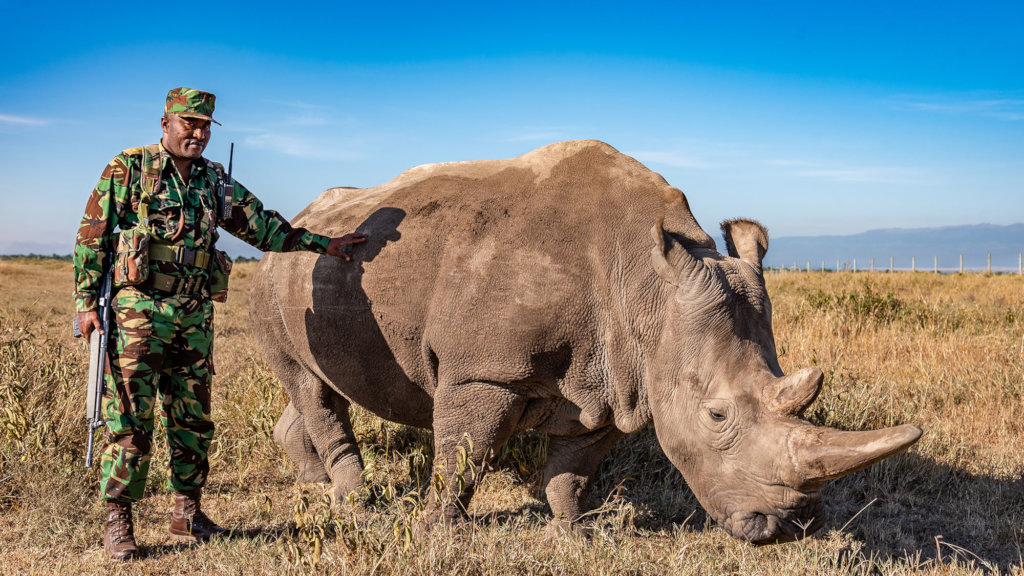
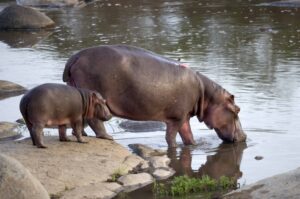 Hippopotamus: responsible for an estimated 3,000 deaths per year. Yes, the hippopotamus, that round-hipped critter that is often portrayed cartoon-like in a tutu, tops the Killer List. They don’t go looking for trouble, but male hippos fiercely defend their territories – which include the banks of rivers and lakes, while female hippos get extremely aggressive if they sense anything getting between them and their babies. Hippos are the third biggest animal in Africa, can run 30 mph, and have sharp half-meter teeth in enormous jaws. Suggestion: don’t put yourself between a hippo and its homeplace.
Hippopotamus: responsible for an estimated 3,000 deaths per year. Yes, the hippopotamus, that round-hipped critter that is often portrayed cartoon-like in a tutu, tops the Killer List. They don’t go looking for trouble, but male hippos fiercely defend their territories – which include the banks of rivers and lakes, while female hippos get extremely aggressive if they sense anything getting between them and their babies. Hippos are the third biggest animal in Africa, can run 30 mph, and have sharp half-meter teeth in enormous jaws. Suggestion: don’t put yourself between a hippo and its homeplace.
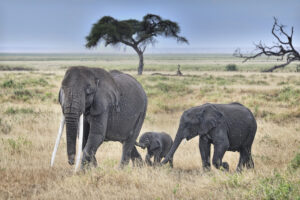 African Elephant: responsible for an estimated 500 deaths per year. We think of elephants as friendly fellows in circus parades, but remember, an elephant in its own territory feels, and is, responsible for its own well-being. Particularly where poaching occurs or habitat is in danger, older bull elephants, young males, and mothers with babies can be aggressive. They are herbivores, so don’t intend to rip you apart and eat you, they just want to stomp you to death if you bother their babies, or, in the case of those old bulls, disturb their peace. Suggestion: don’t do that.
African Elephant: responsible for an estimated 500 deaths per year. We think of elephants as friendly fellows in circus parades, but remember, an elephant in its own territory feels, and is, responsible for its own well-being. Particularly where poaching occurs or habitat is in danger, older bull elephants, young males, and mothers with babies can be aggressive. They are herbivores, so don’t intend to rip you apart and eat you, they just want to stomp you to death if you bother their babies, or, in the case of those old bulls, disturb their peace. Suggestion: don’t do that.
Nile Crocodile: responsible for an estimated 300 deaths per year. After while, crocodile is a cute expression, and it captures the approach a crocodile takes when making dinner plans. Known for their ambush hunting techniques, they are indiscriminate hunters and will attack any animal that comes within reach, including humans. Attacks on humans occur when people are washing close to riverbanks, or when fishermen get in or out of their boats. Those powerful jaws Clamp! Drag! Stash! Eat! Suggestion: don’t play in the mud.
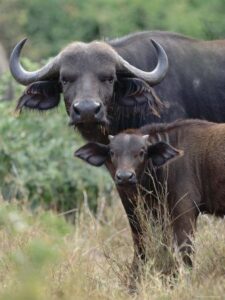 Cape Buffalo: responsible for an estimated 200 deaths per year. The Cape buffalo is sometimes referred to as ‘widow maker’ or ‘the black death.’ Group psychologists might say it’s the temper of the herd that drives the aggressiveness factor; they are fearless and will mob any predator that dares take its young. Big pointy horns, big bodies, trampling feet – they have no desire to snack on humans, but will come together in a mob if need be to protect each other. Suggestion: don’t rollerskate in a buffalo herd.
Cape Buffalo: responsible for an estimated 200 deaths per year. The Cape buffalo is sometimes referred to as ‘widow maker’ or ‘the black death.’ Group psychologists might say it’s the temper of the herd that drives the aggressiveness factor; they are fearless and will mob any predator that dares take its young. Big pointy horns, big bodies, trampling feet – they have no desire to snack on humans, but will come together in a mob if need be to protect each other. Suggestion: don’t rollerskate in a buffalo herd.
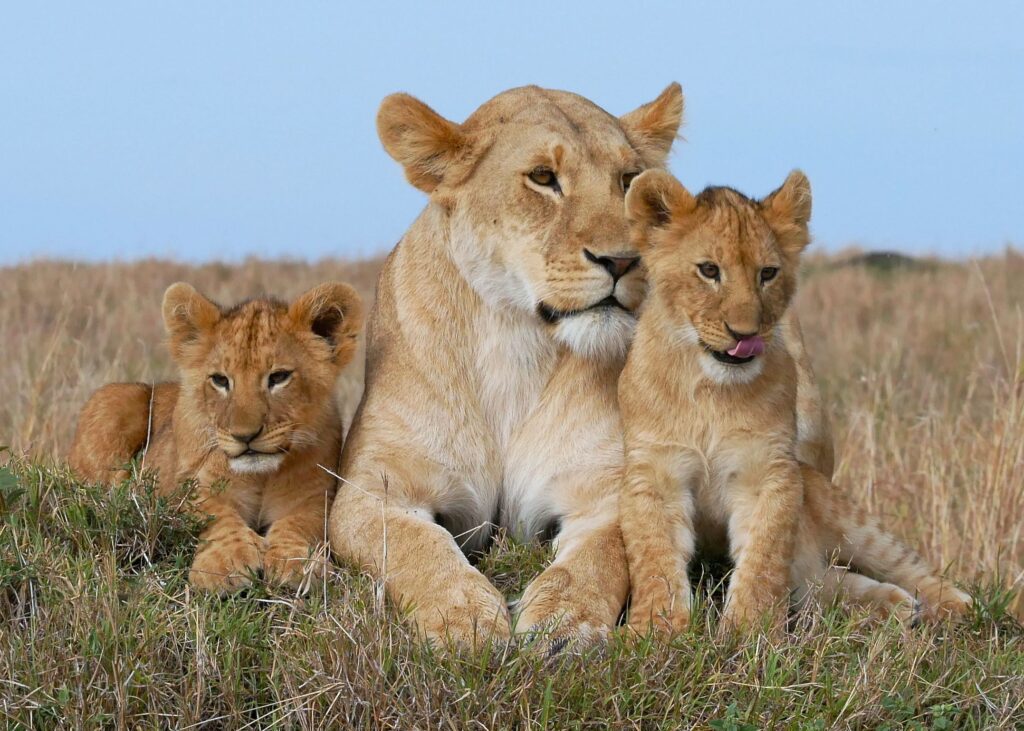 Lion: responsible for an estimated 200 deaths per year. Lions are predators, but they don’t naturally have a taste for humans, they’d much prefer a fresh antelope, zebra, or wildebeest. Those 200 human deaths in a year are generally caused by old sick lions, in areas where their natural prey has been depleted. Most attacks are on locals who eke out a living on the fringes of the game reserves. A sad end for the lions, and for the people. Suggestion: stop making the lion a bad guy.
Lion: responsible for an estimated 200 deaths per year. Lions are predators, but they don’t naturally have a taste for humans, they’d much prefer a fresh antelope, zebra, or wildebeest. Those 200 human deaths in a year are generally caused by old sick lions, in areas where their natural prey has been depleted. Most attacks are on locals who eke out a living on the fringes of the game reserves. A sad end for the lions, and for the people. Suggestion: stop making the lion a bad guy.
Last comment: An estimated 55 elephants a day are killed by poaching humans. Ponder that.
